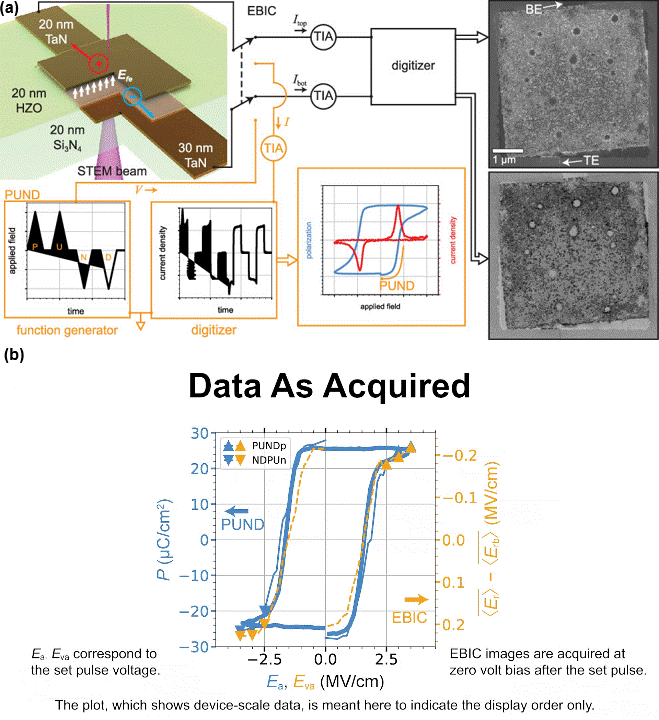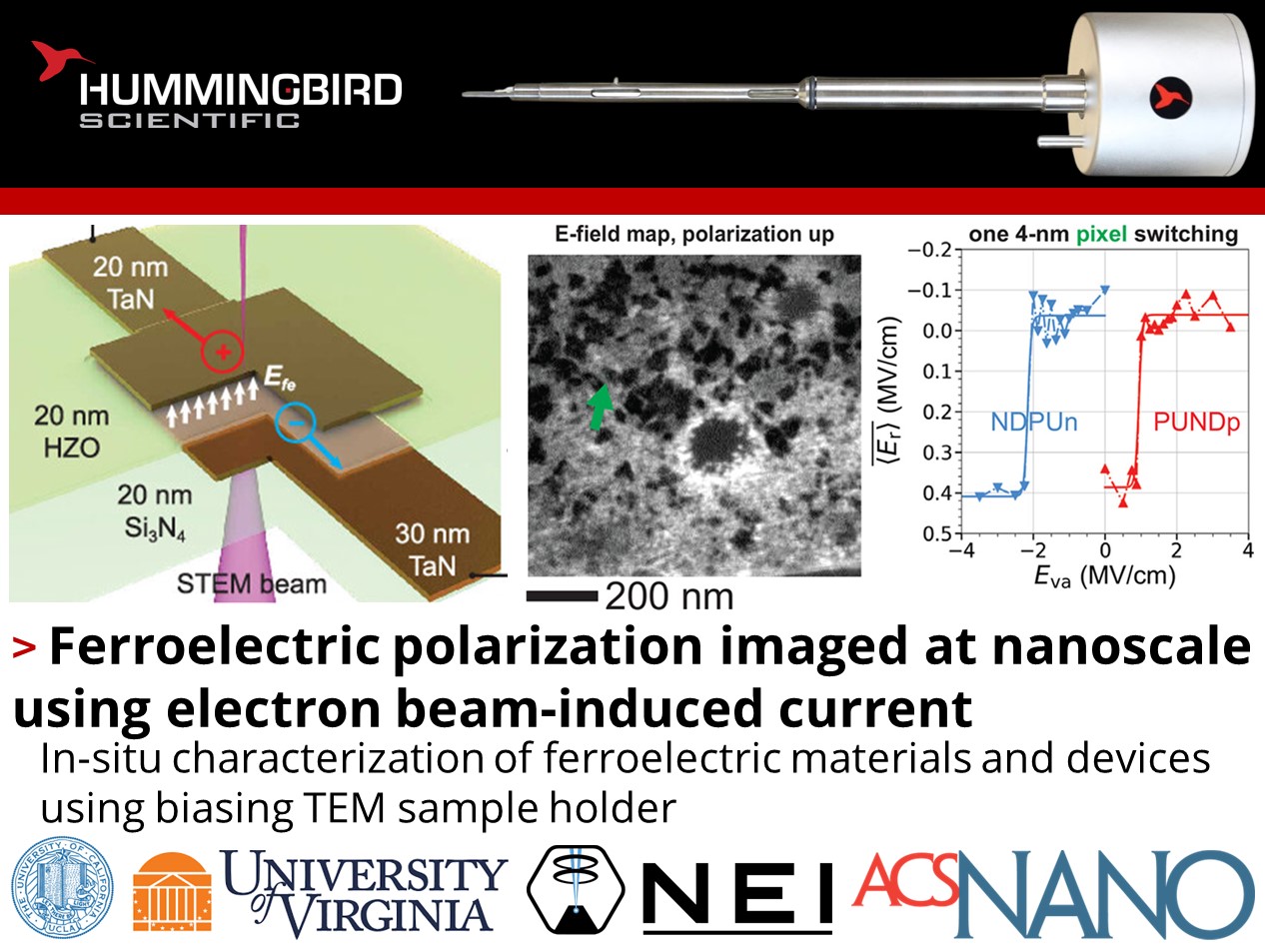Can local ferroelectric polarization be mapped at the nanoscale?
Ho Leung Chan, William Hubbard, Brian Regan, and their colleagues at the University of Virginia, NanoElectronic Imaging Inc., and University of California published recent work using the NanoElectronic Imaging Inc. scanning transmission electron microscope electron beam-induced current (STEM-EBIC) system featuring a Hummingbird Scientific in-situ electrical biasing TEM sample holder. The integrated product was used to calibrate and image the ferroelectric polarization of a hafnium zirconium oxide, HZO (Hf0.5Zr0.5O2), capacitor acquiring interpretable contrast linearly related to the measured ferroelectric polarization.

a) Schematic of experiment overview. A microfabricated TaN/HZO/TaN capacitor is switched between the lower and upper signal paths for PUND and EBIC measurements, respectively. The PUND sequence plotted leaves the HZO polarized down. Subsequent EBIC imaging (images) maps the remanent ⟨Er⟩, which nominally points up. Electron–hole pair separation produces a hole current (bright contrast) and an electron current (dark contrast). STEM images are acquired simultaneously. b) Video showing device-scale polarization data and domain-scale imaging of polarization and contrast switching.
Because the STEM-EBIC signal generated in the microfabricated capacitor is linear with applied voltage, the image can be interpreted as a map of the electric field. This provides a magnification-independent and tunable contrast for ferroelectric polarization. Using the Hummingbird biasing holder to apply different pulsed polarizing voltages, the contrast of polarizable domains can be varied and distinguished from background domains, and remanent field can be measured and decomposed in the absence of an applied field. The technique will facilitate characterization and development of advanced ferroelectric materials and devices.
Reference:
Ho Leung Chan, Shelby S. Fields, Yueyun Chen, Tristan P. O’Neill, Megan K. Lenox, William A. Hubbard, Jon F. Ihlefeld, and Brian C. Regan, ACS Nano, XXXX (X) XXX-XXX (2024) DOI: 10.1021/acsnano.4c04526
Full paper Copyright © 2024 The Authors. Published by American Chemical Society. This publication is licensed under CC-BY 4.0.
View All News

